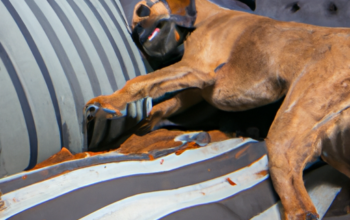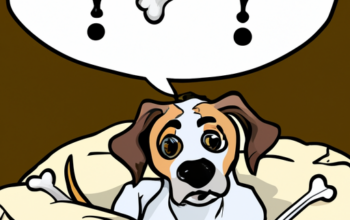Just as we humans need regular pedicures to keep our toenails in check, our four-legged companions also require the same attention to their nails.
Ever heard the clickety-clack of your dog’s nails on the floor and wondered if it’s time for a trim? Well, you’re right! Regularly trimming your dog’s nails is more than just about aesthetics; it’s an essential aspect of their health and comfort.
In this article, we’ll equip you with the necessary tools and knowledge to perform this task at home confidently. We’ll help you identify the ‘quick’ in your pet’s nails – a crucial part that mustn’t be cut – and share effective techniques to keep them calm during the process.
Finally, we’ll guide you through the proper procedure for a safe and efficient nail trimming session. Embark on this journey with us to ensure your furry friend’s paws stay healthy and comfortable!
Understanding the Importance of Regular Trimming
You might not realize it, but regular nail trims are more crucial to your pup’s health and comfort than you’d think.
Overgrown nails can cause a range of nail health implications, from discomfort while walking to serious injuries. If the nails get too long, they can curve into your dog’s paw pad, leading to pain and even infections.
Moreover, long nails can affect your dog’s posture and joint alignment which could lead to chronic issues over time.
The trimming frequency depends on how fast your dog’s nails grow. Generally, most dogs need their nails trimmed every month or so. However, this varies depending on the breed and lifestyle of your pet.
Regularly inspecting your dog’s paws will help you determine an appropriate schedule for nail trims.
Gathering the Necessary Tools
Feeling your heart flutter with anticipation, let’s gather the essential tools for this delicate task to ensure your furry friend’s comfort and safety. When it comes to nail trimming, choosing the right instrument is crucial.
Here are a few important tools along with their respective ‘Tool Safety Measures’:
| Tools | Tool Safety Measures |
|---|---|
| Clippers (Guillotine-style or Scissor-style) | Ensure they have sharp blades and provide a firm grip |
| Styptic Powder | Use in case of accidental bleeding |
| File | To smoothen any rough edges after clipping |
Remember, there is a variety in clippers; some dogs may be more comfortable with one style over another. Always approach this task with patience and care to make nail trimming a stress-free experience for both you and your pet.
Identifying the Quick in Your Pet’s Nails
Identifying the quick in your pet’s claws can be somewhat of a science experiment. Quick detection methods are crucial to avoid causing your dog pain and discomfort.
If you look closely, you’ll notice that a dog’s nail consists of two parts: the opaque outer shell and an inner pink or gray area known as the quick. In lighter-colored nails, it’s typically easy to spot the quick due to its distinct color difference.
However, if your furry friend has darker nails, identifying the quick might be more challenging. You can use a flashlight held up against the nail to better visualize it.
When cutting your dog’s nails, always aim to cut at a 45-degree angle just before where the quick starts to prevent injury. Avoiding quick injury is paramount for maintaining their trust during this grooming process.
Techniques for Keeping Your Pet Calm
Keeping your pet calm during grooming sessions can be quite the challenge, but with a few tried-and-true techniques, it’ll feel like a walk in the park!
-
Conditioning: Begin by touching their paws without cutting their nails. Gradually introduce them to the nail clipper and reward them for staying calm.
-
Soothing Music Effect: Studies show that music has a calming effect on dogs, so consider playing some soft tunes during the session.
-
Aromatherapy Benefits: Certain scents like lavender can have a soothing effect on pets too. Use an aromatherapy diffuser in your grooming area.
-
Comfortable Environment: Make sure the place where you cut their nails is familiar and comfortable.
Implementing these strategies can take time, but it’ll make nail-trimming sessions less stressful for both of you in the long run!
The Proper Procedure for Trimming
Unsure about where to start with pet grooming? It’s common to feel a bit overwhelmed, but don’t worry! You’re not alone and the process is simpler than it seems. Remember, trimming your furry friend’s claws should never be a rushed activity; instead, consider it as an opportunity for bonding and showing them some extra love.
Before you begin, familiarize yourself with Trimming Hazards and Proper Angles. Here’s a simple guide:
| Step | Action | Expected Outcome |
|---|---|---|
| 1 | Hold paw gently | Dog remains calm |
| 2 | Identify the quick of nail (avoid this) | Prevents bleeding |
| 3 | Cut at Proper Angle (45 degrees) | Safe and even trim |
| 4 | Use appropriate clippers or grinders | Ensures efficient trimming |
| 5 | Reward dog after each successful trim session | Creates positive association |
Remember to always take caution when handling your pet’s paws and nails. With patience and practice, you’ll master this in no time.
Frequently Asked Questions
How often should I trim my dog’s nails?
“Nail growth rate varies, but typically, you should be comfortable trimming your dog’s nails every 3-4 weeks. Regular trims prevent overgrowth and keep your pet comfortable. Always observe for signs of discomfort.”
Are there different types of nail clippers for different breeds of dogs?
Yes, clipper selection can vary based on the breed of your dog. Different breeds have different nail types and thicknesses, so breed specific tools may be beneficial for a safer, more comfortable nail trimming session.
What should I do if I accidentally cut into the quick?
Over 60% of pet owners have cut into the quick. If it happens, don’t panic. Quick treatments involve applying styptic powder to stop bleeding. Use comforting techniques like petting and treats to calm your dog afterwards.
Can I use human nail clippers on my dog?
While you can use human nail clippers on your dog, it’s not ideal. Proper clipping techniques involve using tools designed for dogs, ensuring safer and easier trimming. Consider clipper alternatives like grinders for better results.
What should I do if my dog is scared of nail clippers?
If your dog is scared of nail clippers, use desensitizing techniques. Gradually introduce the clippers in a non-threatening way. Pair their appearance with treats to apply positive reinforcement methods, reducing fear and building confidence.
Conclusion
In conclusion, don’t let the task of trimming your dog’s nails become a mountain out of a molehill. It’s essential for their comfort and health.
With the right tools, knowledge about their anatomy, calming techniques, and proper procedure, you’ll be more than equipped to handle this task like a pro.
So roll up your sleeves and keep your best friend’s paws primped and prim!



